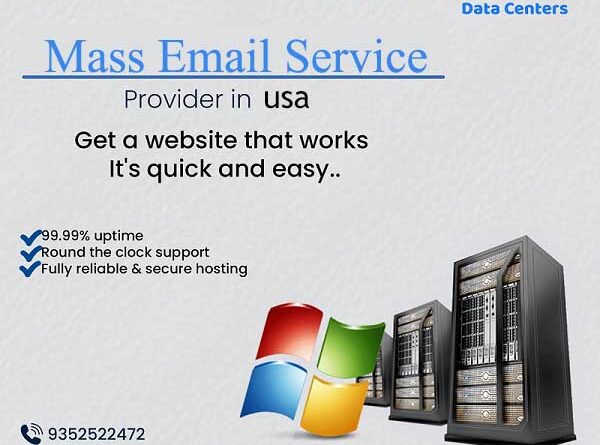Enhance Your Email Campaigns with Mass Email Service and Mass Mailing Server Integration
In today’s digital age, effective communication is key for businesses and organizations to reach their target audience. Mass email service has emerged as a powerful tool to send large volumes of emails to multiple recipients simultaneously. This article will delve into the concept of mass email service, its benefits, and how it can enhance your communication strategy. We will explore the features of a mass mailing server and highlight the importance of using a reliable service provider. So, let’s get started!
I. Understanding Mass Email Service
A. What is Mass Email Service?
Mass email service is a platform that enables businesses and individuals to send a large number of emails to a defined group of recipients at once. This service eliminates the need for manual, individual email sending, saving time and effort. Whether you’re a marketer promoting a new product, an event organizer reaching out to attendees, or a nonprofit organization engaging with supporters, mass email server can significantly simplify your email communication process.
B. Benefits of Mass Email Service
Time and Cost Efficiency: Mass email service automates the process of sending emails, allowing you to reach a large audience with minimal effort and time investment. It eliminates the need for manual sending and ensures that your messages are delivered promptly.
Personalization and Customization: Many mass email service providers offer features to personalize your emails with recipient names, merge tags, and dynamic content. This allows you to create customized email campaigns that resonate with your audience, increasing engagement and response rates.
Analytics and Tracking: Mass email service provides detailed analytics and tracking capabilities, allowing you to measure the success of your campaigns. You can track open rates, click-through rates, bounce rates, and other metrics to gain insights and optimize your email marketing strategy.
Segmentation and Targeting: With mass email service, you can segment your email list based on various criteria such as demographics, interests, or previous interactions. This enables you to send targeted messages to specific segments, increasing the relevance and effectiveness of your email campaigns.
II. Mass Mailing Server: Powering Your Email Campaigns
A. What is a Mass Mailing Server?
A mass mailing server is a dedicated server that handles the distribution of mass emails. It is designed to handle large volumes of outgoing emails efficiently, ensuring high deliverability rates and avoiding spam filters. A reliable mass mailing server acts as the backbone of your mass email server, ensuring that your emails reach the intended recipients’ inboxes.
B. Features of a Mass Mailing Server
SMTP Relay: A mass mailing server uses the Simple Mail Transfer Protocol (SMTP) to relay emails. It establishes a secure connection with the recipient’s email server and delivers the message reliably.
IP Rotation and Warm-up: To maintain a good email sending reputation, mass mailing servers often employ IP rotation and warm-up techniques. These ensure that emails are sent from multiple IP addresses and gradually increase the volume to establish a positive reputation with internet service providers (ISPs).
Delivery Monitoring and Bounce Handling: A mass mailing server continuously monitors the delivery status of emails and handles bounced emails automatically. Bounce handling helps maintain a clean email list by removing invalid or non-existent email addresses.
Security and Authentication: Mass mailing servers implement various security measures such as SPF (Sender Policy Framework), DKIM (Domain Keys Identified Mail), and DMARC (Domain-based Message Authentication, Reporting, and Conformance) to authenticate emails and prevent spoofing or phishing attempts.
Optimized Delivery Infrastructure: High-performance mass mailing servers utilize optimized delivery infrastructure, including server clustering, load balancing, and redundant systems. These ensure efficient email delivery and minimize the chances of downtime.




